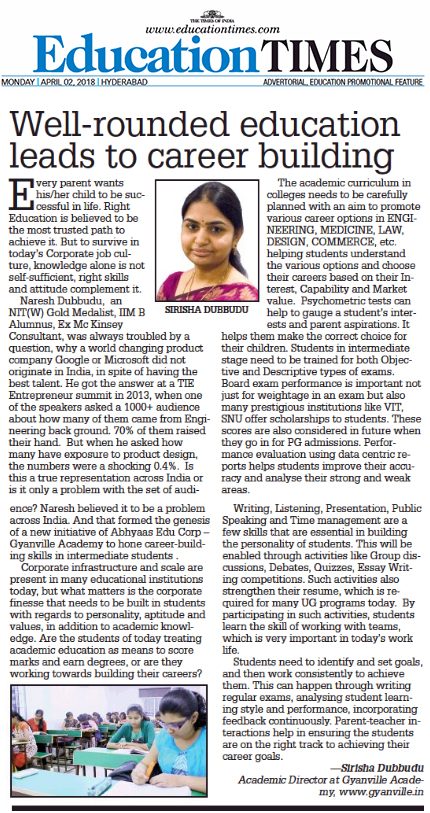US public schools are losing students fast: What it means for teachers, budgets, and students – Times of India

Report on US Public School Enrollment Trends and Implications for Sustainable Development Goals
Executive Summary
An analysis of data from the National Center for Education Statistics (NCES) reveals a significant and ongoing decline in US public school enrollment. This trend, accelerated by the COVID-19 pandemic, poses substantial challenges to the achievement of several United Nations Sustainable Development Goals (SDGs), most notably SDG 4 (Quality Education), SDG 10 (Reduced Inequalities), and SDG 8 (Decent Work and Economic Growth). The data indicates a structural shift in the American education landscape, requiring policy responses aligned with sustainable development principles to ensure equitable and effective education for all.
Post-Pandemic Enrollment Decline: A Challenge to SDG 4 (Quality Education)
The decline in student numbers directly threatens the stability and quality of public education systems, a cornerstone of SDG 4, which aims to ensure inclusive and equitable quality education for all. The data highlights a critical period of contraction.
- Between the 2020 and 2024 academic years, US public schools experienced a net loss of 1.28 million students, representing a 2.5% decrease in total enrollment.
- After a brief period of stabilization, enrollment fell again in 2024, with a net loss of over 102,000 students, indicating that the trend is not merely a post-pandemic anomaly but a continuing challenge.
- This contraction impacts the financial viability of schools, potentially compromising the resources available to provide a quality learning environment.
Regional Disparities and the Impact on SDG 10 (Reduced Inequalities)
The enrollment crisis is not uniform across the nation, creating significant regional disparities that undermine SDG 10 (Reduced Inequalities). Access to quality education is becoming increasingly dependent on geographic location, exacerbating existing inequalities.
- Steep Declines: States such as New York, California, Mississippi, and West Virginia recorded enrollment losses exceeding 5% between 2020 and 2024.
- Modest Growth: In contrast, only nine states saw any growth during the same period. North Dakota was the only state to see an increase of more than 2%.
- Uneven Recovery: In 2024, 39 states recorded year-over-year declines, while states with gains, like New Jersey and South Carolina, saw growth of less than 1%.
This uneven landscape suggests that children in different states face vastly different prospects regarding the stability and resourcing of their public education systems.
Long-Term Projections and Systemic Challenges
NCES projections indicate that the decline will continue, presenting long-term systemic challenges to the sustainability of the public education infrastructure. The pre-pandemic growth trend has been permanently reversed in many areas.
- Pre-Pandemic Growth vs. Post-Pandemic Decline: States like Oregon and Washington, which saw enrollment growth of 7.5% and 9.2% respectively between 2012 and 2020, experienced sharp reversals, losing 6.2% and 4.2% of their students between 2020 and 2024.
- Future Outlook: Projections show a further 5.3% drop in national enrollment by 2032, down to approximately 46.9 million students.
- States at High Risk: The most severe declines are projected for a number of states, threatening to deepen educational inequality. States expected to lose over 12% of their student population include:
- Hawaii
- California
- Mississippi
- New Mexico
- New York
System-Wide Implications for Sustainable Development
The consequences of declining enrollment extend beyond school budgets, affecting multiple facets of sustainable development.
- SDG 4 (Quality Education): Districts are forced into school consolidation and campus closures, which can disrupt educational continuity and reduce access to specialized programs, thereby affecting the quality of education.
- SDG 8 (Decent Work and Economic Growth): Falling enrollment creates instability for the education workforce. It impacts teacher recruitment, retention, and staffing ratios, undermining the goal of providing decent work for educators.
- SDG 10 (Reduced Inequalities): The shift toward alternative models like homeschooling and charter schools, often a response to perceived declines in public school quality, may widen the gap between students from different socioeconomic backgrounds if not managed for equity.
- SDG 11 (Sustainable Cities and Communities): Public schools are vital community hubs. Their closure can weaken community infrastructure and social cohesion, impacting the overall sustainability of local communities.
Conclusion: A Call for Policy Aligned with Sustainable Development Goals
The fundamental evolution of public school enrollment in the United States is a structural issue with profound implications for the nation’s commitment to the Sustainable Development Goals. The data underscores an urgent need for policymakers to move beyond short-term fixes and develop long-term strategies. These strategies must address resource allocation, support for the teaching profession, and equitable access in a changing demographic landscape to ensure the public education system remains a resilient, inclusive, and effective pillar of a sustainable society.
Analysis of Sustainable Development Goals in the Article
SDG 4: Quality Education
Ensure inclusive and equitable quality education and promote lifelong learning opportunities for all.
The entire article is centered on the state of public education in the United States, making SDG 4 the most relevant goal. The discussion revolves around declining student enrollment, the factors driving this trend (demographics, policy shifts, alternative schooling), and the subsequent impact on the educational system’s infrastructure, funding, and staffing. The article’s core theme is the challenge of providing consistent and accessible public education amidst significant demographic and societal shifts, which directly aligns with the mission of SDG 4.
Identified SDG Targets
-
Target 4.1: By 2030, ensure that all girls and boys complete free, equitable and quality primary and secondary education leading to relevant and effective learning outcomes.
The article directly addresses this target by focusing on enrollment in public primary and secondary schools. The decline in enrollment (“US public schools lost 1.28 million students” since 2020) is a primary concern for achieving universal access and participation. The article also highlights the lack of equity in this trend, noting that “these numbers vary state by state,” with some states like New York and California experiencing declines of over 5%, while others see modest growth. This uneven landscape challenges the goal of providing equitable educational opportunities for all children.
-
Target 4.a: Build and upgrade education facilities that are child, disability and gender sensitive and provide safe, non-violent, inclusive and effective learning environments for all.
This target is relevant due to the article’s discussion of the physical consequences of declining enrollment. It explicitly states that these shifts affect “building utilisation” and that “Some districts have already begun consolidating schools, closing campuses, and reallocating resources.” Furthermore, it points to the dual challenge of managing resources in declining areas while also needing to “scale infrastructure in areas where student numbers are rising,” which is central to Target 4.a’s goal of maintaining and upgrading education facilities.
-
Target 4.c: By 2030, substantially increase the supply of qualified teachers…
The article connects enrollment trends directly to the teacher workforce. It states that declining enrollment “affects everything from school staffing and teacher recruitment to district funding models.” The need for “policymakers to rethink long-term strategies around… staffing ratios” is also mentioned. While the target focuses on increasing the supply of teachers, the article’s points about managing staffing and recruitment in a shrinking system are directly related to the challenge of ensuring an adequate and qualified teaching force is available for the students who remain, which is the underlying principle of this target.
Identified SDG Indicators
-
Indicator for Target 4.1: Public school enrollment numbers and rates.
The article is fundamentally based on this indicator, using data from the National Center for Education Statistics (NCES). Specific data points mentioned include the overall loss of “1.28 million students” between 2020 and 2024, a “2.5% drop in total enrolment,” and state-specific figures such as New York and California losing “more than 5% of their student population.” The article also uses projected enrollment (“decline to approximately 46.9 million students by 2032”) as a key indicator for future trends.
-
Indicator for Target 4.a: Number of schools consolidated or closed.
This indicator is implied by the article’s statement that as a consequence of declining enrollment, “Some districts have already begun consolidating schools, closing campuses, and reallocating resources.” Tracking the number of school closures or consolidations would be a direct way to measure the impact on educational infrastructure as discussed in the text.
-
Indicator for Target 4.c: School staffing levels and teacher-student ratios.
This indicator is implied when the article discusses the consequences for the education system, noting the impact on “school staffing and teacher recruitment” and the need to rethink “staffing ratios.” Measuring changes in the number of teachers employed or the student-to-staff ratio would serve as a direct indicator of the challenges mentioned in the article related to maintaining a stable teaching workforce.
Summary of Findings
| SDGs | Targets | Indicators |
|---|---|---|
| SDG 4: Quality Education | Target 4.1: Ensure all children complete free, equitable and quality primary and secondary education. | Public school enrollment numbers and rates: The article cites a “2.5% drop in total enrolment” and a loss of “1.28 million students” since 2020. |
| Target 4.a: Build and upgrade education facilities. | Number of schools consolidated or closed: Implied by the statement that districts have begun “consolidating schools, closing campuses, and reallocating resources.” | |
| Target 4.c: Substantially increase the supply of qualified teachers. | School staffing levels and teacher-student ratios: Implied by the mention of impacts on “school staffing and teacher recruitment” and the need to rethink “staffing ratios.” |
Source: timesofindia.indiatimes.com

What is Your Reaction?
 Like
0
Like
0
 Dislike
0
Dislike
0
 Love
0
Love
0
 Funny
0
Funny
0
 Angry
0
Angry
0
 Sad
0
Sad
0
 Wow
0
Wow
0








































































